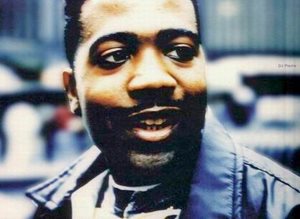
Selective Synthesis: "Acid Tracks"
New Horizons, New Tools, and the Phuture of Electronic Music
Originally introduced as a companion to the TR-606, Roland’s TB-303 was meant as an accompaniment tool for the solo guitar player. Designed by Tadao Kikumoto (who also helmed the TR-909) it was intended as a bass emulator that allowed real-time practice and recording solutions for the practical musician. It seemed all roads would eventually lead to a virtual ensemble via Roland’s library of electronic instruments. But there was one little problem.
The 303 sounded absolutely nothing like a bass guitar.
With its unorthodox sequencing system, a heady complex of knobs and sound variations, and unusual rhythm template, guitarists everywhere shook their heads in confusion. The instrument was discontinued in 1984. Soon after, pawn shops and second-hand music stores became inundated with the apparently impractical bass platform. This wasn’t the end of the TB-303, however. In fact, the instrument would soon be on the cusp of a musical revolution.

Around this time, electronic musicians and producers in Chicago were looking towards new horizons and needed tools to move their sound into these unexplored musical territories. After going to a friend’s house and observing the 303 in action, Nathaniel Jones and Earl Smith Jr (soon to be a part of the seminal acid house group Phuture) picked one up at a local pawn shop to experiment.

Unsurprisingly, they were initially perplexed, but after some toil, they found a basic sequence. Out of curiosity, they started tweaking knobs and altering the loop until it squelched and morphed into an amalgam unknown. They knew immediately they had found the sound they were looking for. For the next few hours they tweaked and turned—challenging the parameters of the device, finding themselves ultimately with a composition entitled “In Your Mind.” Thanks to its hypnotizing aural qualities, Phuture's song was later dubbed “Acid Tracks” by local club aficionado Ron Hardy.
The trance-like rhythm of “Acid Tracks” spread like wildfire throughout the Chicago club scene, eventually making its way to Europe and planting the seed for the “Second Summer of Love.” A variant of the sixties free-love revolution, this time flower power was replaced with mind-bending grooves. The 303 served as a technicolor cradle for the birth of a smiling generation of clubbing neophytes.

So, what makes “Acid Tracks” so special? Take away the lineage, and the bizarre elevation of the nearly-forgotten 303 into a club-stomping leviathan, what you're left with is the score for a 12-minute hallucination. That’s no slight of phrase; this song makes the listener feel chemically altered.
At the heart of “Acid Tracks” is an ineffable sequence made of amoebic timbres. Ghostly squelch after ghostly squelch, like strange spazzing tentacles, the monster slowly glitches its way across the stereo spectrum. The reverbed pulse of its minimal percussive elements pushes the haunting procession of the underworld forward with the unceasing urgency of a war march.
There are few dynamics: no climax, no release, just a tumbling matrix of chaos and uncertainty. “Acid Tracks” makes the listener feel as if this song is an infinite loop, and these are just the 12 minutes that got captured.

Carl Sagan would have been pleased. It would be no surprise if “Acid Tracks” was the first signal sent back by the Voyager satellite. Somewhere in an alternate reality, this groove somersaults over and over relentlessly, parading its alien heartbeat into the third eye of some harmonic angel being born and reborn again into and out of the flames of Elysium.
OK, OK...so it’s a trippy song. At the end of the day, what "Acid Tracks" makes you want to do is be free. To be underneath flashing lights in some basement club and lose yourself completely to rhythm and movement. To be young and on fire and to discover the spirituality that is so often overlooked in electronic music. The cathartic discovery of the self through the act of cutting a dang rug.
Isn’t that what dancing is all about? Being unfettered by the tribulation and drudgery of normalcy and weaving a helix of freedom out of the fragmented minutiae to say: I am here, now. I am in this body and I am of this mind.
Photos Courtesy of the Artist